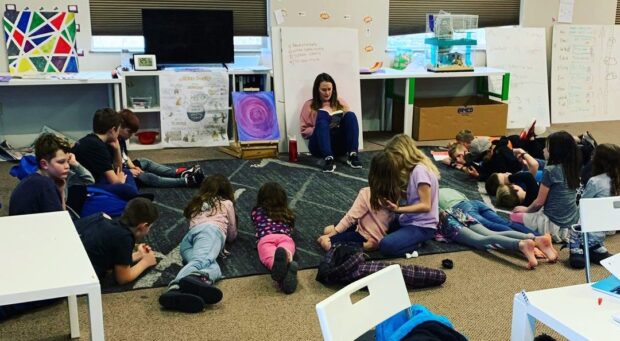
Microschools have emerged in Idaho with little legal framework to shape them and no comprehensive tracking of their rise.
But as more of the multi-family learning cooperatives seemed to crop up in response to pandemic-era school operations, the Legislature — without naming them — built a form of microschools into state law.
That’s according to a recent report published by the Manhattan Institute and coauthored by Duncan Robb, a former Idaho State Department of Education official.
“It seems like attention on (microschools) has grown, at least temporarily,” Robb told EdNews by phone Wednesday.
The report shed new light on microschools’ presence in Idaho, but much remains unknown: how many microschools there are, how many of them are private or public, or whether emerging microschools can survive now that all of the state’s school districts are back to in-person instruction.
What are microschools?
The term “microschool” dates back at least half a decade, but its definition is still somewhat amorphous.
The Manhattan Institute’s report defines microschools as “schools that are formed by a small group of families bringing their children together to be taught by one or a few dedicated educators.” It counts that “small group” as one with 10 families or fewer.
Labels that fit that definition also include “pods,” or — since coronavirus protocols caused parents to seek other learning models — “pandemic pods.” And terms including “pod” and “microschool” are often used interchangeably.
Subsets of advocates and critics alike have referred to microschools as a return to the one-room schoolhouse, due to the schools’ tendencies to teach students of multiple ages under one teacher and one classroom. Sometimes private and sometimes public, microschools are also distinct from traditional school districts, in that involved parents or teachers typically set curriculum.
Rising prevalence in Idaho?
The pandemic gives reason to expect microschools may have increased their hold in Idaho, but no counts are available. The State Department doesn’t track non-public school students, including homeschooled and private school students. So the state doesn’t have enrollment counts for private microschools like Boise’s Heroes Academy or Idaho Falls’ Acton Academy. (EdNews can’t find enrollment numbers for these private schools, and leaders did not respond to inquiries by deadline).
And a public option to establish the learning collectives hasn’t gained much traction since its creation earlier this year.
The Legislature passed Senate Bill 1046 during the 2021 session, giving school districts the ability to create “innovation classrooms” at the request of parents. Such classrooms would allow multiple families to use different curricula, teachers and instructional methods from the district. But students would stay enrolled in the district, and teachers would be district employees, ensuring that districts don’t lose their share of per-pupil funding and that teachers don’t lose out on state benefits.
As originally written, parents could have forced the arrangement, but amendments made it so districts have to give the OK.
The report frames these so-called innovation classrooms as a form of public microschools. However, the first school year the law has been on the books hasn’t made much of an impact. The law has so far produced a “goose egg” number of districts with innovation classrooms, as far as Robb knows, raising questions about whether the learning model will gain traction with sitting school administrators.
“There are other levers parents are likely to pull before trying to make 1046 work because they may not know it exists,” Rep. Wendy Horman, R-Idaho Falls, was quoted as saying in the report.
Rural vs. urban splits
A similar learning model has already existed in rural classrooms for decades, according to National Rural Education Association President Allen Pratt.
“I think the microschools are the definition of what rural schools can be and what rural schools are currently like in a lot of places,” Pratt told rural administrators at an Idaho Association of School Administrators conference in August. “We invented the one-room schoolhouse. … We’re doing the microschool already.”
Most microschools in Idaho appear to be popping up in the Treasure Valley, rather than in less populous areas, the report found. So districts with few students may be less likely to suffer a hit to their per-pupil funding from the state, where a group of families pulling their students out of public schools could drastically tip school operations.
The report makes similar observations, saying “Idaho’s strong homeschooling community and its low-enrollment rural districts create political dynamics not seen in many other states. Very small schools are not an innovation in Idaho; they are common across the state and have been for generations. Indeed, policy proposals to expand education options that might succeed elsewhere create complications.”
Rural districts have largely avoided parent withdrawals in mass, which the report attributes to their lack of pandemic-related disruptions.
